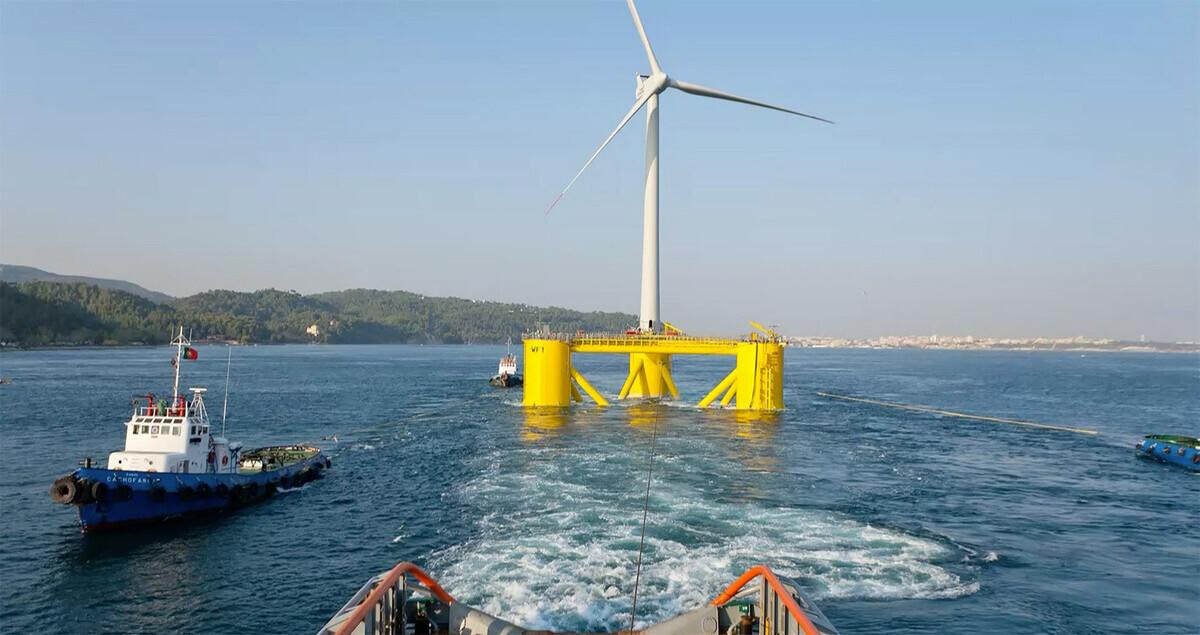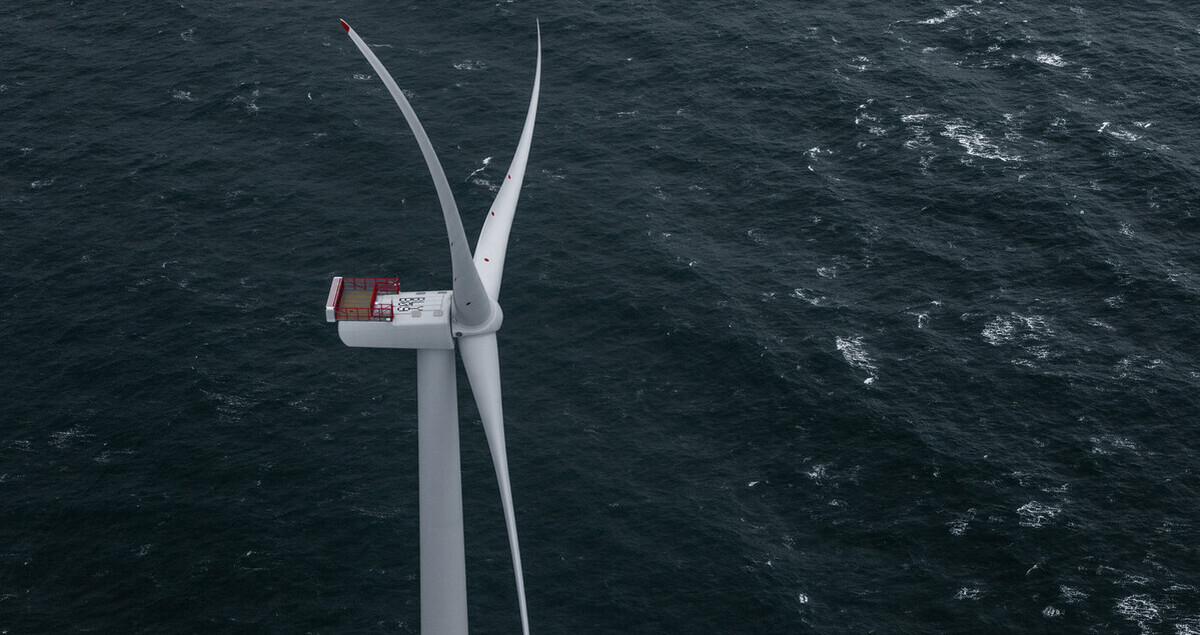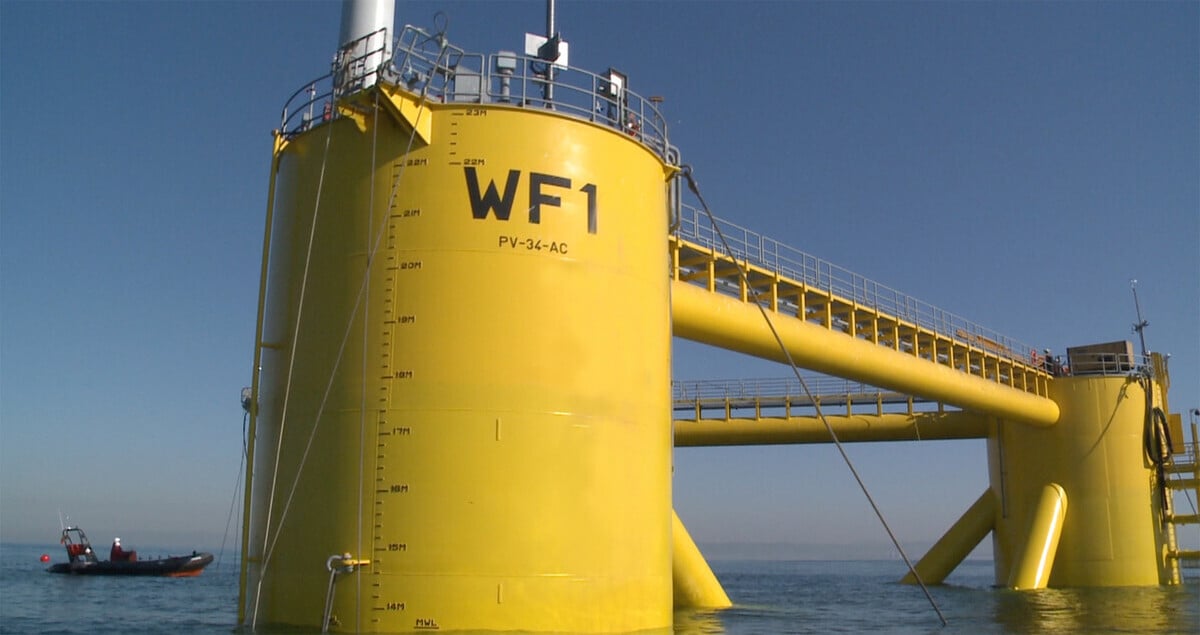4 reasons why floating wind power is energy’s new frontier

Offshore wind is the poster child for the energy transition. A growing footprint around the world is evidence of its compelling success story.
Now less and less reliant on subsidies and matching – even exceeding - traditional fossil-fuel power in both megawatts and economics, offshore wind is forecast to become a $1 trillion business over the next 20 years.
But to deliver on this prediction, the industry will need to start taking turbines further out to sea, into deeper waters.
Doing so comes with its own challenges, but the technology – wind turbines mounted on floating foundations – is evolving fast, and a series of demonstration projects are underway.
According to the IEA, fixed and floating wind technology could together unlock enough potential for offshore wind to meet the world’s total power demand 11 times over in 2040.
Here are 4 reasons why floating offshore wind is the new frontier for renewables.
1. It opens up new markets
Floating wind turbines open up offshore wind to regions where the continental shelf drops off too fast for fixed turbines to be viable. Globally, these represent a large untapped market.
Continental shelves are the edges of a continent covered by the sea, and they vary considerably in size. Along the Californian coast, the shelf extends less than a kilometer, while on the north coast of Siberia it stretches to about 1,300 kilometers.
Deep waters close to the shoreline restrict where fixed foundations for wind turbines can be built. This is the case in geographies such as the U.S. West Coast and countries like Japan and Portugal, which are prime candidates for floating wind power. The technology will allow these markets to generate renewable energy from wind close to where it’s needed, overcoming their geographic limitations.
Albert Winnemuller, head of floating at MHI Vestas Offshore Wind, explains: “Typically I would say the tipping point for floating over fixed foundations is at around 60 meters water depth. But floating platforms could be installed in waters as deep as 1,000 meters.”
In addition to unlocking deep water sites close to shore, floating wind technology opens up the possibility of wind farms further out at sea in locations where it would be impossible to use fixed bottom foundations, capitalizing on the higher and more reliable marine wind speeds.

2. Floating technology is maturing
Floating wind and its underlying technologies have been developed and tested for about a decade.
The demonstration projects are now reaching a critical mass where they are helping provide sufficient operational data to make large-scale, commercial projects viable within the next few years.
While floating offshore wind projects have been announced across Asia and the U.S., the majority are located in Europe. Toward the end of 2019, the first turbines were recently floated at Windfloat Atlantic in Portugal. New projects in Groix & Belle Isle and the Golfe du Lion in France were also awarded supplier contracts.
These follow earlier pilots in Europe, most notably in Scotland with the world’s first operational floating wind facility, Hywind, and a floating turbine from MHI Vestas Offshore Wind at Kincardine.
Japan was also among the early pioneers, as floating offshore wind is important to its energy security post-Fukushima, complementing its limited number of fixed foundation offshore wind sites. In 2019 the Japanese government identified 11 sites suitable for floating wind development.
3. Government support is growing
As with fixed foundation offshore wind farms, government support will play an important role in floating wind during its developmental stage.
“There will be a need for support for the learning curve on floating projects – until aspects like the foundation technology and the supply chain are more mature,” says Winnemuller.
Key developments include European Commission aid for four French floating wind demonstration projects, and a €60 million loan from the European Investment Bank for the 25 MW Windfloat Atlantic facility off Portugal’s northern coast. Stateside, the U.S. energy department has announced up to $28 million support for new floating turbines.
Government backing will help with high upfront investments in the technology, enabling the sector take it to the same economically viable point that fixed offshore wind has reached – as quickly as possible.

4. Operation and maintenance is getting smarter and safer
Locating floating turbines out on the high seas means placing valuable assets in an extreme and harsh environment.
This poses major challenges for both the operation and maintenance of floating turbines.
For this reason, cutting-edge smart control technology developed for fixed turbines is now being adapted for new floating demonstration projects.
“Turbines are packed with intelligence to ensure that they can provide maximum output, while hedging against the risks they are exposed to by the rough conditions on the high seas,” says Winnemuller.
The artificial intelligence embedded in the turbines can help adjust the tilt and thrust of blades to counter the force of waves, ensuring the turbine always remains upright.
At the same time, automated condition monitoring on the turbines helps ensure maintenance is predictive, alerting operators to potential problems before they occur.
This allows operators to plan maintenance to occur during calmer seas, ensuring the safety of those engineers sent out to maintain and repair the turbines.
Floating power generation at sea may be a new frontier, but it’s one that the wind power ecosystem – suppliers, operators and policy-makers – will soon break through.
"Vestas Wind Systems A/S (Vestas) and MHI have signed an agreement to expand their partnership in sustainable energy. The strengthened partnership entails that Vestas will acquire MHI's shares in the MVOW joint venture, and MHI will acquire 2.5 percent in Vestas and be nominated to a seat in Vestas' Board of Directors.
Through the strengthened partnership, Vestas makes an emphatic long-term move in offshore wind energy to become a leading player in offshore wind by 2025 and to expand the two companies' overall leadership in sustainable energy. The companies also aim to meet customer needs across a wider range of the value chain and increase their global leadership in sustainable energy solutions. To that end and underlining the long-term goal of the agreement, Vestas and MHI will also plan for collaborating in green hydrogen as well as a joint venture in Japan to secure accelerated growth for onshore and offshore wind energy."





